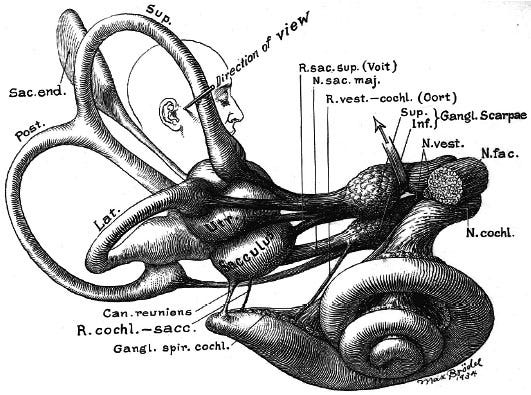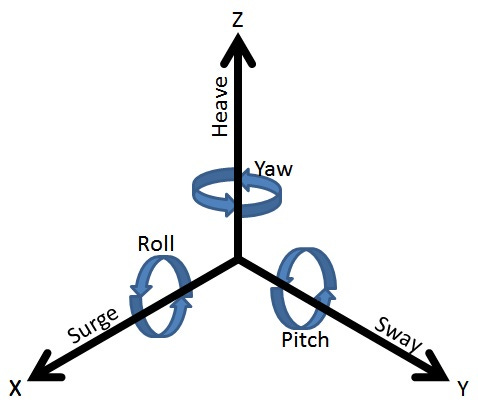To understand proper athletic recovery from vertigo, we must look past the diagnosis and into the complex, high-speed systems that govern human movement.
When Chilean tennis star Nicolás Jarry made his emotional comeback at Wimbledon, the world saw a story of human resilience. We witnessed a man who, despite a debilitating illness, reclaimed his place at the top of his sport. But beneath the inspiring headlines lies a deeper, untold story—a story of a silent, high-speed war waged inside the brain. It's a battle that millions of people experience, but few understand. To truly grasp what Jarry conquered, we must examine the catastrophic failure of the body's most sensitive and essential motion control systems.
The Body's Hidden Supercomputer
Deep in the inner ear lies the vestibular system. It's not just for balance; it's the body's supercomputer for motion. Its primary reflex is the fastest in the human body, firing in as little as 5 to 8 milliseconds— 16 x faster than the blink of an eye (100-400 milliseconds)! This system is the absolute master of our position in space. Its sensitivity is so profound that it governs our every movement across six crucial degrees of freedom, making it a vital component in an athlete's performance.
The Six Building Blocks of Athletic Movement
Think about what makes a tennis player great. The vestibular system controls it all:
Linear Movements: It senses you surging forward for a drop shot and decelerating on a dime. It tracks you heaving side-to-side for a wide volley or surging forward and backward to catch a drop shot. It registers you bobbing up and down as you prepare to receive a serve.
Angular Movements: It governs the quick yaw of your head as you turn to track the ball's trajectory. It controls the pitch of your head as you look down and then up during a service motion. It manages the subtle roll of your body as you tilt for a slice backhand.
These movements aren't just obscure biomechanical terms; they are the six fundamental building blocks of an athlete's every action. And it is this exquisitely sensitive system that neuritis damages.
When the Supercomputer Crashes
Describing what happens next as 'just neuritis' or a 'vestibular nerve injury' is a profound understatement. It's a catastrophic disruption of the crucial performance factors that an athlete relies on. The hardware that governs their every move now sends corrupt data. This corruption of data marks the beginning of the internal war, significantly impacting the athlete's performance.
The Internal War: A Battle Between Eyes and Feet
Understanding this battle is crucial. The brain, receiving faulty information from its fastest reflex, panics. It no longer trusts the inner ears. In a desperate attempt to stay safe and upright, the brain's entire strategy for movement changes. It begins to over-rely on the other senses, forcing the athlete to become entrenched in a battle between their eyes and their feet.

Imagine this conflict: The athlete's visual system, desperate for a stable picture of the world, starts screaming, ‘Don't move your head too fast - I need to see!’ But their somatosensory system, now needing constant reassurance from the ground, starts yelling, ‘Don't pick up your feet! Stay planted and stable - I need to feel!’ An elite athlete, who needs a free head and light feet to dominate, finds their brain commanding them to do the exact opposite.
The Price of the Battle: Performance Loss and Injury Risk
What happens when an athlete is trapped in the middle of this sensory war? Two things ensue. First, a massive drop in performance occurs. The effortless, intuitive movement vanishes, and a clumsy, conscious effort replaces it. The second, and more dangerous, consequence is a dramatically increased risk for athletic injury. When the body's master motion sensor is offline, the knees, ankles, and back endure forces and stresses they were never meant to handle, paving the way for further physical breakdown. This war has profound implications for an athlete's performance and physical well-being.
The Strategic Solution: Rewiring the Brain
Understanding this battle—and the fact that the dizziness and loss of performance are symptoms of a deeper, flawed sensory strategy—is the first step toward a proper recovery. It allows us to move beyond treating just the nerve injury and instead focus on strategically retraining the brain. We harness the brain's incredible ability to change, a phenomenon known as neuroplasticity, which is built on the simple yet powerful principle of Hebbian learning: neurons that fire together wire together. By using highly targeted therapy, we stimulate the correct sensory systems to fire in unison, systematically rewiring healthy connections that enable the brain to broker a peace treaty between the eyes and the feet, and ultimately restore its trust in the body's most vital system for human movement.








Great post! Thank you for sharing this. The vestibular system is truly incredible!